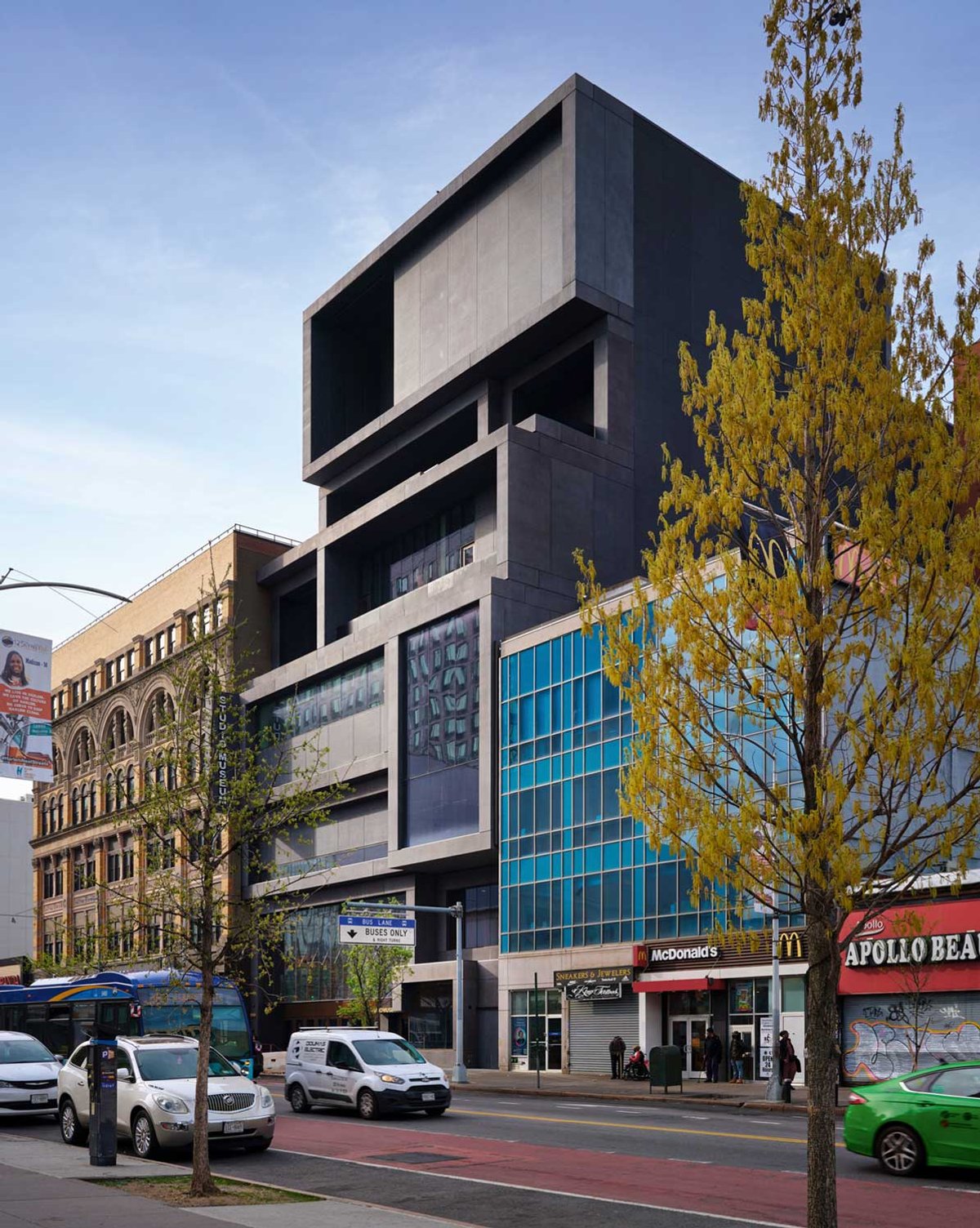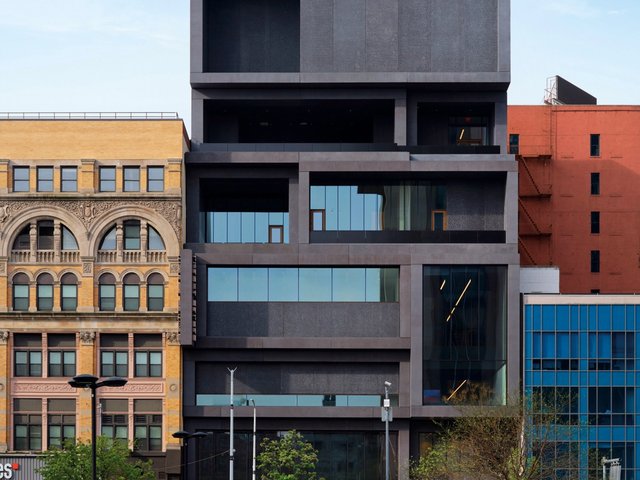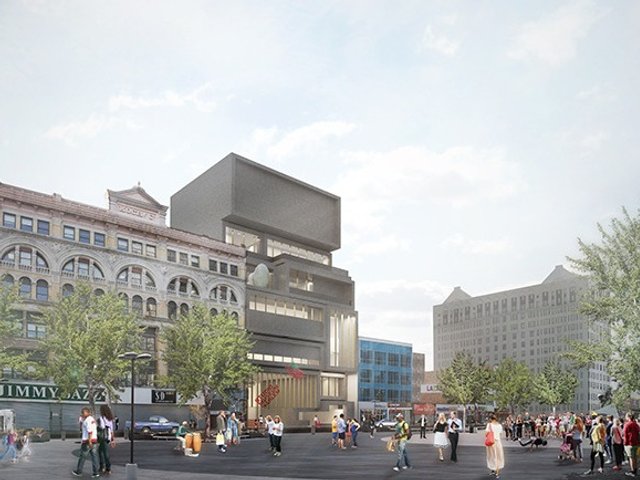The Studio Museum in Harlem reopens after seven years on 15 November. Its new home was created from the ground up on the museum’s former footprint at 144 West 125th Street. The first purpose-built space in its 57-year history, the 82,000-sq.-ft building was designed by Adjaye Associates with Cooper Robertson as executive architect—the two teams also collaborated on the recently opened new Princeton University Art Museum. The Studio Museum’s $300m price tag—fully fundraised, almost a quarter from public sources—includes construction, operating costs during closure and a $50m endowment (the institution’s first).
The architect David Adjaye, the founder of his namesake firm, was accused of sexual assault in 2023 (he denies the allegations). “In July 2023, the board of trustees of the Studio Museum in Harlem and David Adjaye agreed that David Adjaye would step away from the museum’s building project,” the Studio Museum said in a statement to The Art Newspaper. “At that time, the design vision was nearly complete and the building was well into construction.”
A muscular and syncopated stack of dark-grey precast-concrete volumes, of varying heights and framing expansive windows, rises six storeys and cuts a dramatic profile on the busy commercial street. The building aims to project the power and voice of Black artists in the art world today, in no small part due to the Studio Museum’s sustained efforts over the decades to support, exhibit, collect and amplify long-marginalised works.
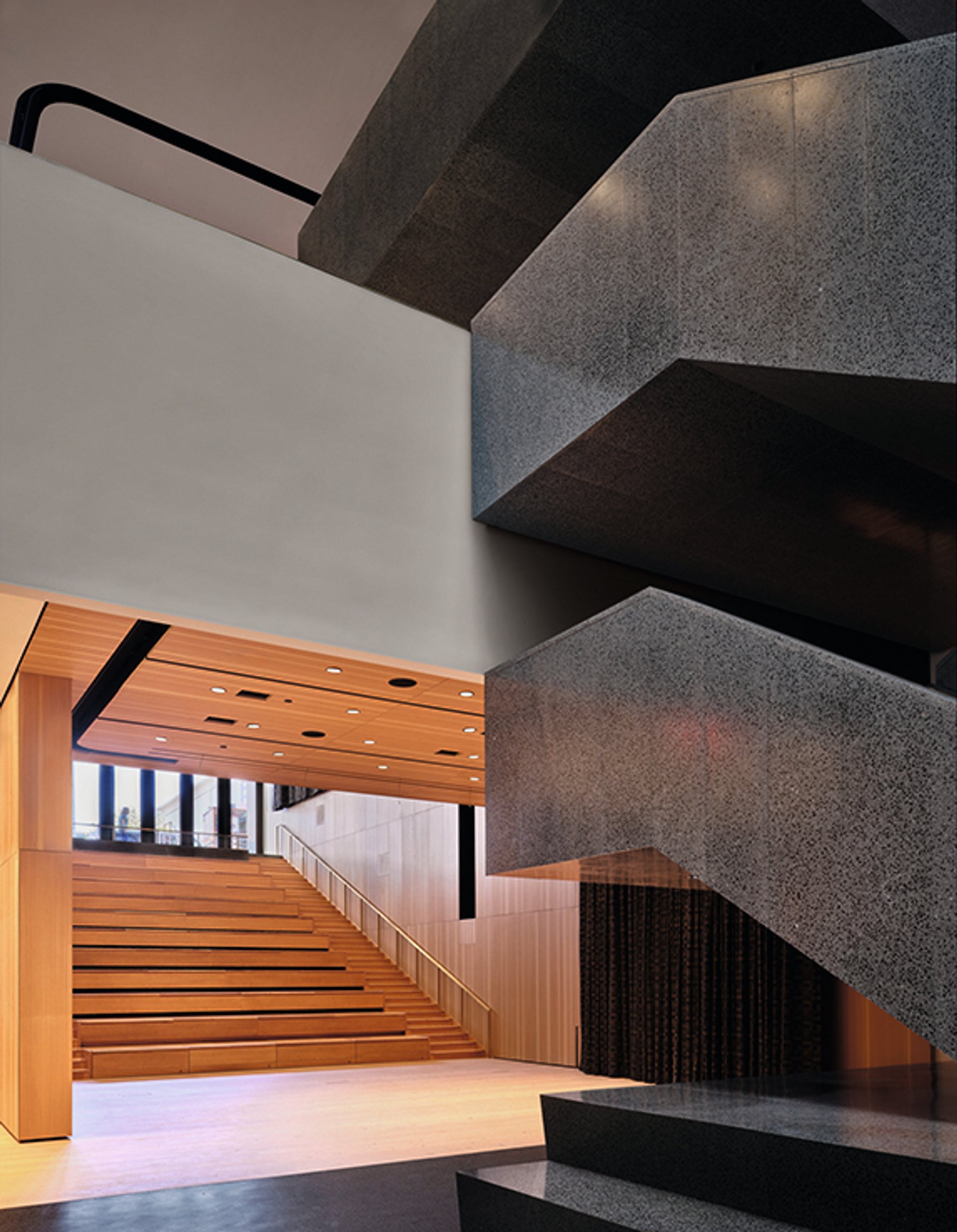
The Stoop, a wide flight of wooden steps, is a place for visitors to gather Photo: © Dror Baldinger FAIA, courtesy the Studio Museum in Harlem
“The façade really is an answer to what it meant to create a new building on 125th Street, one block east of the Apollo [theatre], one block west of the National Black Theatre, on this cultural corridor with institutions that have held Black culture in such profound ways,” said Thelma Golden, the museum’s director and chief curator, during a tour of the completed building in September, before the art was installed.
In her brief to the architects, “I offered three experiences of Harlem that I thought were significant to understand the ethos of this community—the street, the stage and the sanctuary,” Golden says. “Then the architects added the stoop.” These four pillars are reflected throughout the building, where activity inside the museum will be highly visible from outside, just as the street can be seen at different points from within.
A broad set of wooden steps, envisioned as an inverted brownstone stoop, descends gently from the glass façade of the soaring double-height lobby to the lower level. It will serve as a flexible place to sit, eat and gather for public programmes, with a tall curtain that can encircle the whole space for performances and screenings.

Tom Lloyd’s Narokan (1965) features in the museum’s opening exhibition Photo: John Berens, courtesy the Studio Museum in Harlem
A monumental sculptural terrazzo-clad stairway wends its way up the central spine of the building, which stretches the width of the block to 124th Street, with generous galleries flanking either side of the stairwell. A barrel-vaulted, 29ft-tall space on the third floor towards 125th Street will be installed with an inaugural show of colourful wall-mounted electronic sculptures by Tom Lloyd (1929-96), a pioneer of light as an art medium. Lloyd was the first artist shown when the Studio Museum opened in a second-floor loft space above a liquor store on Fifth Avenue just north of 125th Street.
“The opportunity to do the first real Tom Lloyd exhibition since 1968 felt like an incredibly powerful and poetic way to project into our future in this moment of opening, but also to honour the past of this institution,” Golden says.
Pioneering artist-in-residence programme
Galleries on the second and fourth floors towards 124th Street—the upper one with a floor-to-ceiling window overlooking brownstone rooftops and church spires—will showcase nearly 200 works from the more than 9,000 objects in the museum’s permanent collection. The inaugural installation will include art by, among others, Romare Bearden, Betye Saar, Lorraine O’Grady, David Hammons, Faith Ringgold and William T. Williams—who proposed the museum’s defining artist-in-residence programme, initiated in 1969.

Installation view of From Now: A Collection in Context, 2025 Photo: Kris Graves, courtesy the Studio Museum in Harlem
That programme, which annually gives round-the-clock studio access to three artists within the museum during an 11-month residency and an exhibition with work from the residency, has been a significant launching pad for many artists of colour early in their careers. Prominent alumni include Julie Mehretu, Adam Pendleton, Simone Leigh, Njideka Akunyili Crosby, Kevin Beasley and Jordan Casteel. Each of the approximately 150 artists who have been through the programme will be represented by a work on paper to be displayed in the fourth-floor studios and lounge overlooking 125th Street before the next cohort of artists takes residence in 2026.
“They have 24-hour access to the studios, one of the things that’s so special about the programme,” Golden says. “The artists have a relationship to the museum in a very intimate way. Just walking out of their studios, they’re in the galleries.”
While the new building has the same square footage as the museum’s previous home—a repurposed bank building it moved into in 1982—the exhibition space has increased by more than 50% and public areas by almost 60%, because offices have been relocated across the street.
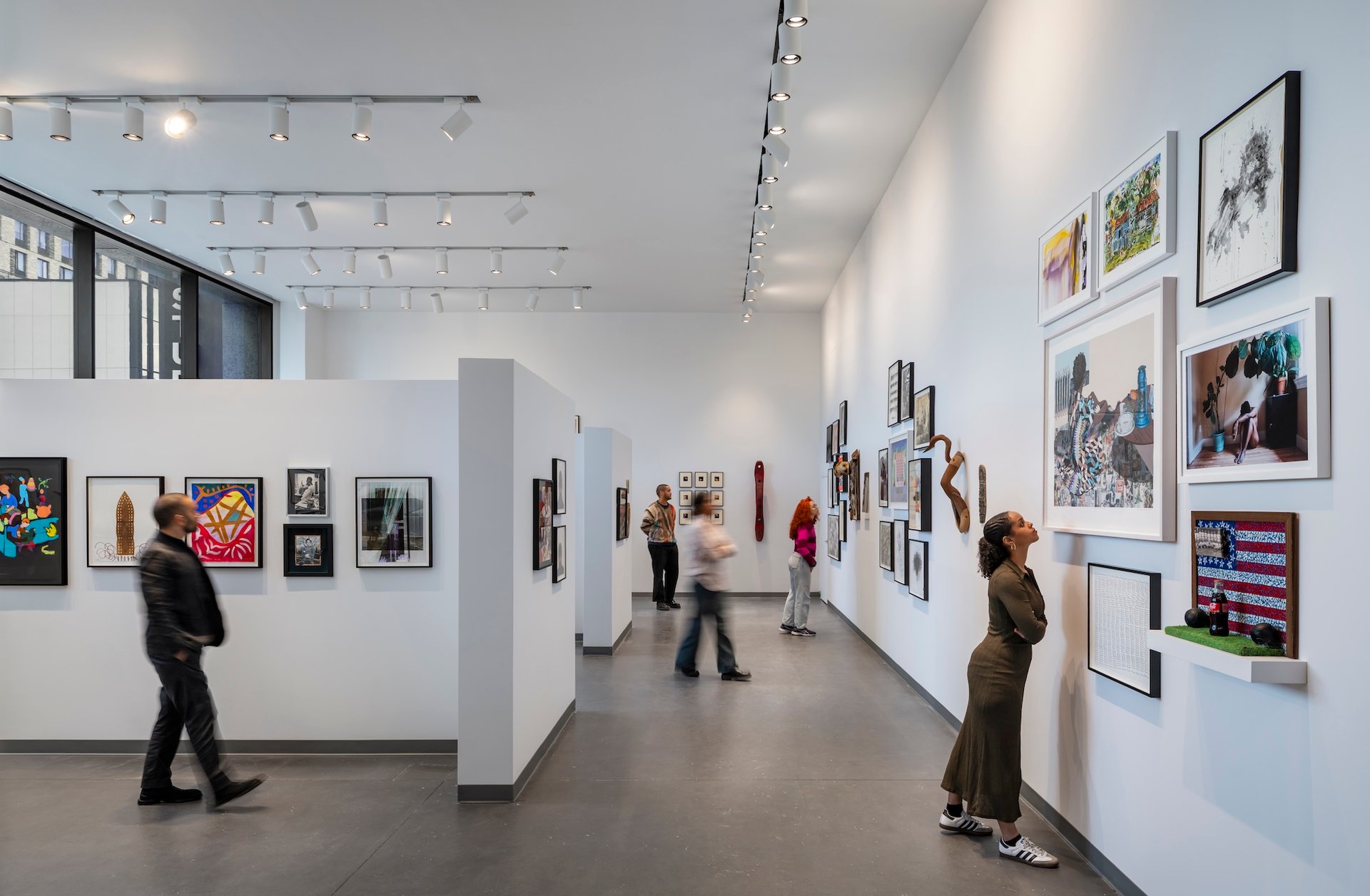
Installation view of From the Studio: Fifty-Eight Years of Artists in Residence, 2025 Photo: © Albert Vecerka/Esto, courtesy the Studio Museum in Harlem
“We were the epitome of a multipurpose space,” says Golden of the museum’s former building, where every educational and public programme happened within the gallery and none of the walls were the same height. Now there are dedicated spaces for the teen workshop and for two school classes at a time. “All of these spaces allow us to do the work that we’ve long done, but to be able to do it at scale and with real capacity,” Golden says.
A sixth-floor project space, leading to the rooftop terrace, will have a show of archival material on the history of the museum. In the late 1960s, when artists of African descent were almost completely excluded from mainstream museums and art galleries, “we were started by a group of artists, activists, community leaders and philanthropists who believed that a museum devoted to the work of Black artists was a necessary part of the way this community that birthed the Harlem Renaissance could define itself through culture”, Golden says. The museum’s seventh director, Golden worked at the Studio Museum for a year as a curatorial intern in 1987 and returned in 2000 as deputy director before taking the helm in 2005.
Before the museum closed for construction in 2018, it averaged between 80,000 and 100,000 visitors annually. Golden declined to give a new projected attendance number other than to say she hopes to welcome as many people as possible. “In 1968, this was not possible,” she says. “But I believe deeply our founders had this ambition. They knew exactly what they were doing. It really is the impetus of that faith that has powered right through into this moment.”


